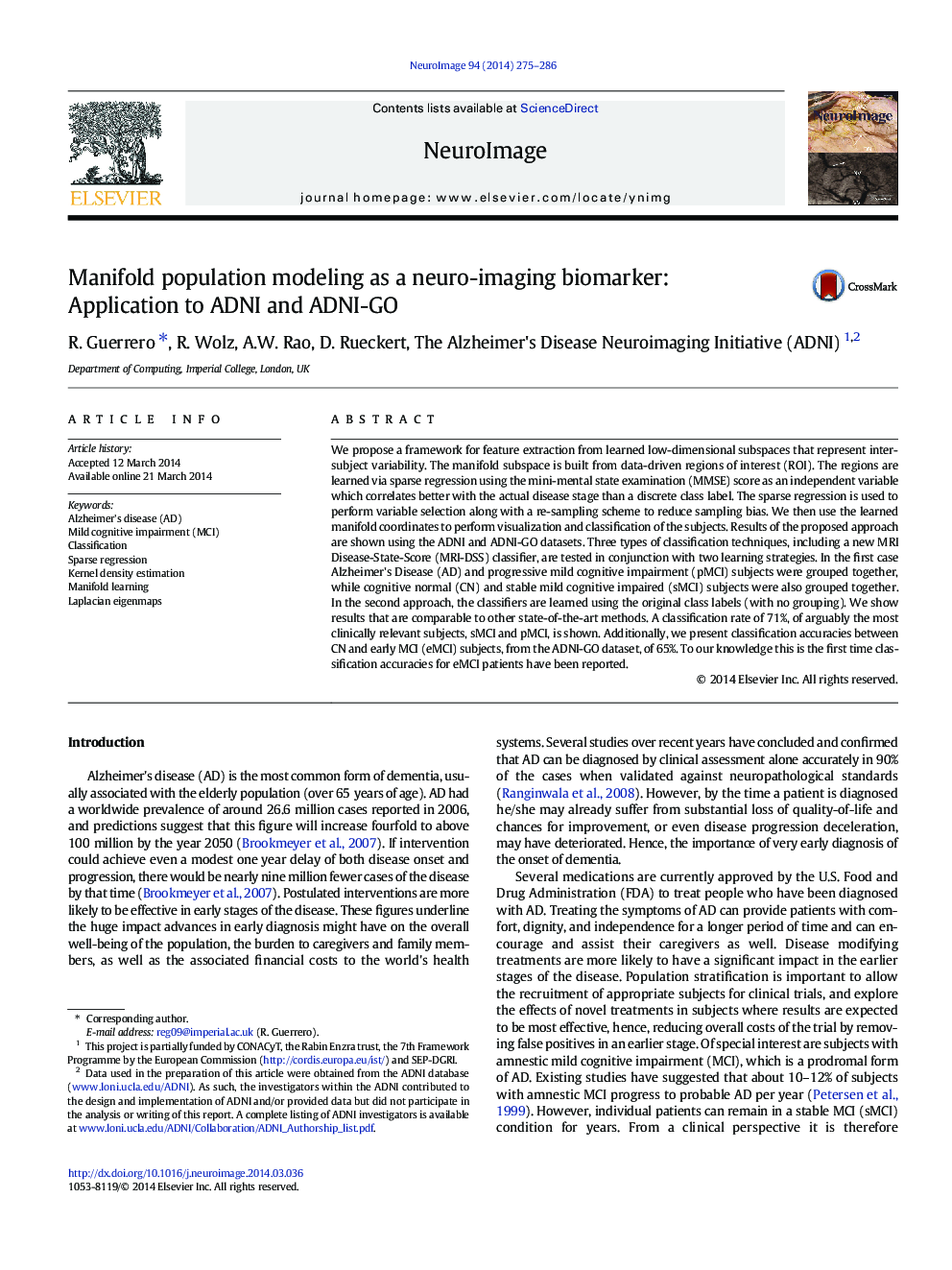| Article ID | Journal | Published Year | Pages | File Type |
|---|---|---|---|---|
| 6027545 | NeuroImage | 2014 | 12 Pages |
Abstract
We propose a framework for feature extraction from learned low-dimensional subspaces that represent inter-subject variability. The manifold subspace is built from data-driven regions of interest (ROI). The regions are learned via sparse regression using the mini-mental state examination (MMSE) score as an independent variable which correlates better with the actual disease stage than a discrete class label. The sparse regression is used to perform variable selection along with a re-sampling scheme to reduce sampling bias. We then use the learned manifold coordinates to perform visualization and classification of the subjects. Results of the proposed approach are shown using the ADNI and ADNI-GO datasets. Three types of classification techniques, including a new MRI Disease-State-Score (MRI-DSS) classifier, are tested in conjunction with two learning strategies. In the first case Alzheimer's Disease (AD) and progressive mild cognitive impairment (pMCI) subjects were grouped together, while cognitive normal (CN) and stable mild cognitive impaired (sMCI) subjects were also grouped together. In the second approach, the classifiers are learned using the original class labels (with no grouping). We show results that are comparable to other state-of-the-art methods. A classification rate of 71%, of arguably the most clinically relevant subjects, sMCI and pMCI, is shown. Additionally, we present classification accuracies between CN and early MCI (eMCI) subjects, from the ADNI-GO dataset, of 65%. To our knowledge this is the first time classification accuracies for eMCI patients have been reported.
Keywords
Related Topics
Life Sciences
Neuroscience
Cognitive Neuroscience
Authors
R. Guerrero, R. Wolz, A.W. Rao, D. Rueckert, The Alzheimer's Disease Neuroimaging Initiative (ADNI) The Alzheimer's Disease Neuroimaging Initiative (ADNI),
